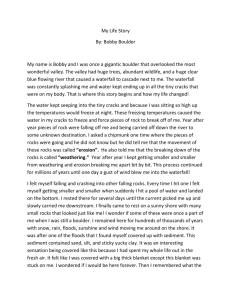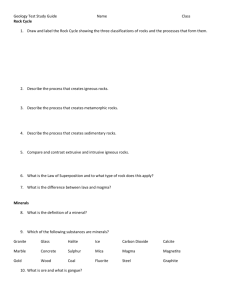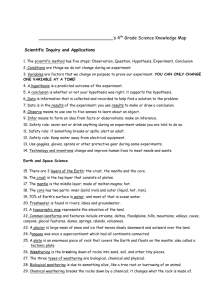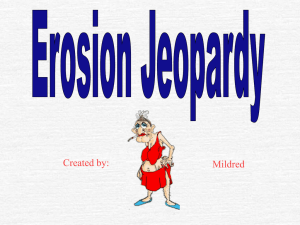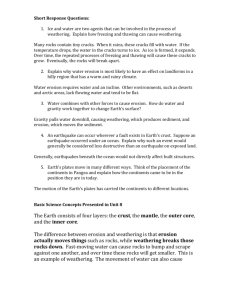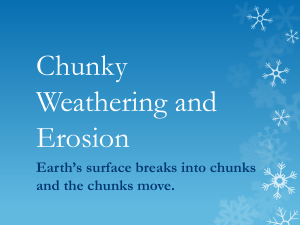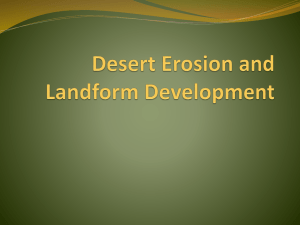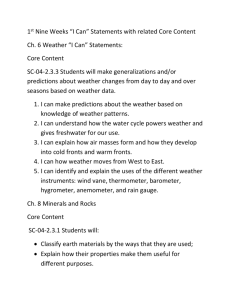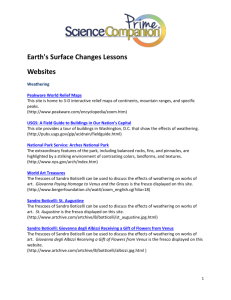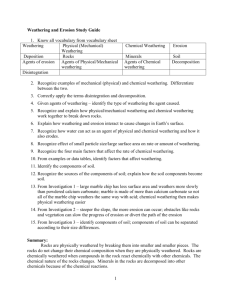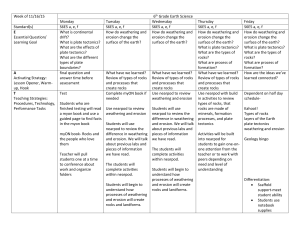Unit 1 Study Guide What is the most common and strongest type of
advertisement
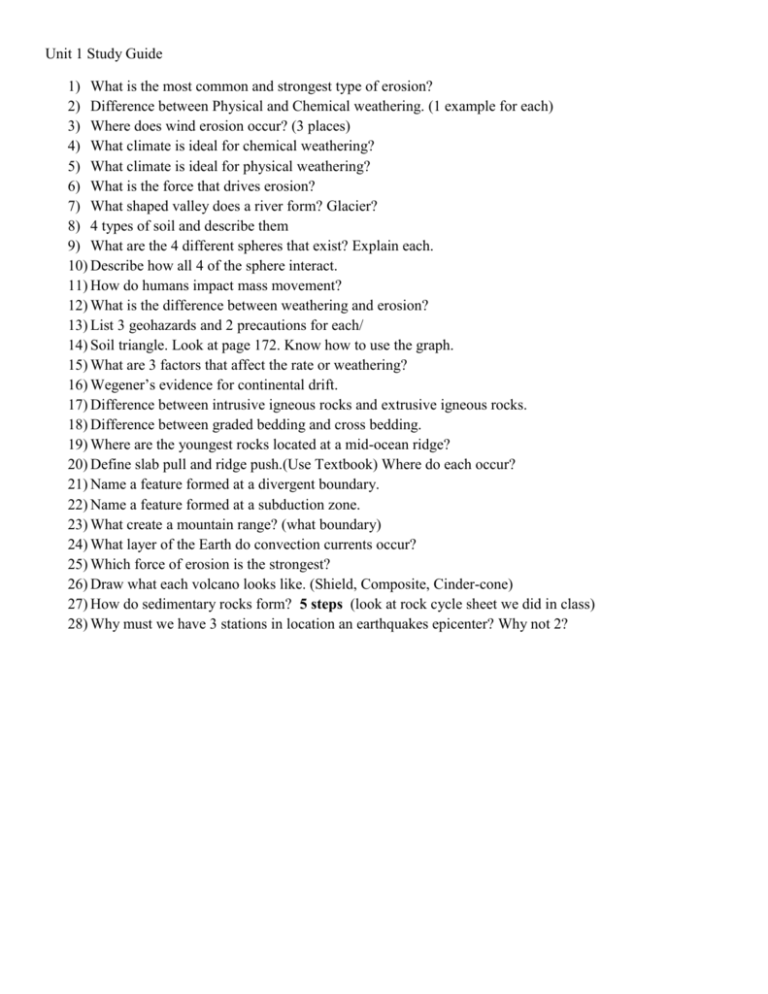
Unit 1 Study Guide 1) What is the most common and strongest type of erosion? 2) Difference between Physical and Chemical weathering. (1 example for each) 3) Where does wind erosion occur? (3 places) 4) What climate is ideal for chemical weathering? 5) What climate is ideal for physical weathering? 6) What is the force that drives erosion? 7) What shaped valley does a river form? Glacier? 8) 4 types of soil and describe them 9) What are the 4 different spheres that exist? Explain each. 10) Describe how all 4 of the sphere interact. 11) How do humans impact mass movement? 12) What is the difference between weathering and erosion? 13) List 3 geohazards and 2 precautions for each/ 14) Soil triangle. Look at page 172. Know how to use the graph. 15) What are 3 factors that affect the rate or weathering? 16) Wegener’s evidence for continental drift. 17) Difference between intrusive igneous rocks and extrusive igneous rocks. 18) Difference between graded bedding and cross bedding. 19) Where are the youngest rocks located at a mid-ocean ridge? 20) Define slab pull and ridge push.(Use Textbook) Where do each occur? 21) Name a feature formed at a divergent boundary. 22) Name a feature formed at a subduction zone. 23) What create a mountain range? (what boundary) 24) What layer of the Earth do convection currents occur? 25) Which force of erosion is the strongest? 26) Draw what each volcano looks like. (Shield, Composite, Cinder-cone) 27) How do sedimentary rocks form? 5 steps (look at rock cycle sheet we did in class) 28) Why must we have 3 stations in location an earthquakes epicenter? Why not 2? Unit 1 Study Guide 1) What is the most common and strongest type of erosion? 2) Difference between Physical and Chemical weathering. (1 example for each) 3) Where does wind erosion occur? (3 places) 4) What climate is ideal for chemical weathering? 5) What climate is ideal for physical weathering? 6) What is the force that drives erosion? 7) What shaped valley does a river form? Glacier? 8) 4 types of soil and describe them 9) What are the 4 different spheres that exist? Explain each. 10) Describe how all 4 of the sphere interact. 11) How do humans impact mass movement? 12) What is the difference between weathering and erosion? 13) List 3 geohazards and 2 precautions for each/ 14) Soil triangle. Look at page 172. Know how to use the graph. 15) What are 3 factors that affect the rate or weathering? 16) Wegener’s evidence for continental drift. 17) Difference between intrusive igneous rocks and extrusive igneous rocks. 18) Difference between graded bedding and cross bedding. 19) Where are the youngest rocks located at a mid-ocean ridge? 20) Define slab pull and ridge push.(Use Textbook) Where do each occur? 21) Name a feature formed at a divergent boundary. 22) Name a feature formed at a subduction zone. 23) What create a mountain range? (what boundary) 24) What layer of the Earth do convection currents occur? 25) Which force of erosion is the strongest? 26) Draw what each volcano looks like. (Shield, Composite, Cinder-cone) 27) How do sedimentary rocks form? 5 steps (look at rock cycle sheet we did in class) 28) Why must we have 3 stations in location an earthquakes epicenter? Why not 2?

